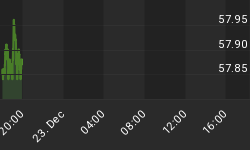7/23/2010 9:07:45 AM
Trade Recommendations:
Take no action.
Daily Trend Indications:

- Positions indicated as Green are Long positions and those indicated as Red are short positions.
- The State of the Market is used to determine how you should trade. A trending market can ignore support and resistance levels and maintain its direction longer than most traders think it will.
- The BIAS is used to determine how aggressive or defensive you should be with a position. If the BIAS is Bullish but the market is in a Trading state, you might enter a short trade to take advantage of a reversal off of resistance. The BIAS tells you to exit that trade on "weaker" signals than you might otherwise trade on as the market is predisposed to move in the direction of BIAS.
- At Risk is generally neutral represented by "-". When it is "Bullish" or "Bearish" it warns of a potential change in the BIAS.
- The Moving Averages are noted as they are important signposts used by the Chartists community in determining the relative health of the markets.
Current ETF positions are: In Cash.
Daily Trading Action
The major index ETFs opened significantly higher and immediately took off even higher with the steep run-up lasting an hour and a half into the session. From there, a gradual slide began with another challenge of intraday highs mounted around noon with the peak not reached until only about an hour was left in the session. A sell-off then took place into the close until a small rally in the final minutes. The Russell-2000 (IWM 63.42 +2.18) gained a whopping 2.6% on the day as shorts ran for cover. The Semiconductor Index (SOX 362.66 +11.53) gained 3.3% as well. The Bank Index (KBE 23.60 +0.81) moved into a trading state as it logged a gain of 3.6% while the Regional Bank Index (KRE 23.10 +0.89) gain a whopping 4.0% but remains mired in a downtrend state. The 20+ Yr Bonds (TLT 100.85 -1.18) lost more than one percent coming off of recent highs but it is in an uptrend state. Volume was similar to Wednesday remaining below average with 1.176B shares traded on the NYSE. Similarly, NASDAQ share volume also remained average with 2.208B shares traded.
There were four economic reports of interest released:
- Initial Jobless Claims for last week rose to 464K versus an expected 445K
- Continuing Jobless Claims fell to 4.487M versus an expected 4.6M
- Existing Home Sales (Jun) came in at 5.37M versus an expected 5.09M
- Leading Economic Indicators (Jun) fell -0.2% versus an expected fall of -0.4%
The first two reports were released an hour before the open while the latter two came out a half hour into the session. Overall, the reports were quite positive with the only miss being the volatile weekly initial jobs report. The others were all better than expected and helped power the rally higher.
All ten economic sectors in the S&P-500 moved lower led by Financials (+3.1%). We note that many EU banks will undergo stress testing. We recall that in the United States, when the large banks were stress tested, the model used required that unemployment would not exceed 10% and would, in fact, be far lower than this. That stress test was used to set reserve requirements and each of the major banks raised cash by various means. At the end of the day, however, the U.S. government propped up the banks to look good in the eyes of the public and this was bullish for equities. We aren't certain how this will go down in Europe, but we can be certain that the various governments there must increase public confidence in those banks, so anything less would be a failure with elected officials likely losing in the next elections. What do you think the results of the stress testing will be? (Yes, this question is rhetorical and perhaps a little cynical).
The yield for the 10-year note was nearly unchanged as it rose two basis points to close at 2.93. The price of the near term futures contract for a barrel of crude oil fell $2.86 to close at $79.30. With tropical storm Bonnie approaching rigs in the Gulf of Mexico, including the site of BP's well-capping efforts, oil prices jumped as storms often disrupt production for a period of time.
Market internals were positive with advancers leading decliners nearly 6:1 on the NYSE and by 5:1 on the NASDAQ. Up volume led down volume 10:1 on the NYSE and by 7:1 on the NASDAQ. The index put/call ratio fell 0.45 to close at 1.33. The equity put/call ratio fell eleven basis points to close at 0.54.
Commentary:
Thursday's trading action did indeed show the bulls get the upper hand. We continue to note that the BIAS for each of the equity indexes we monitor is currently BEARISH but show a distinct likelihood that this could flip to BULLISH in the coming week. We await the opportunity to enter positions in the market and would desire our first entry to be a short position to take advantage of the extreme complacency we are seeing. With that said, we are clearly looking at a longer term bullish market and would swap a short position to a long position as we see the market ready to gain traction to the upside.
We hope you have enjoyed this edition of the McMillan portfolio. You may send comments to mark@stockbarometer.com.
















